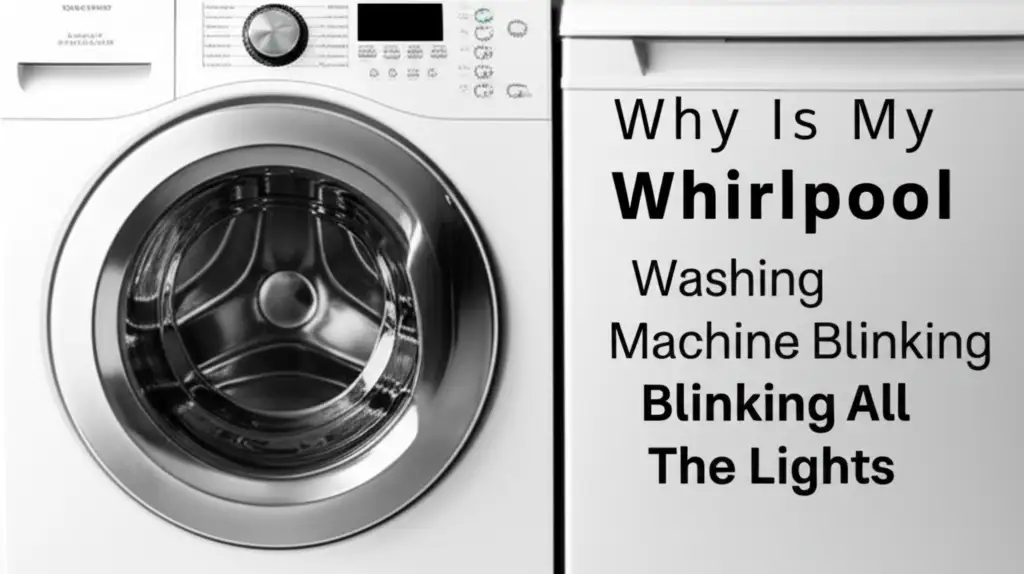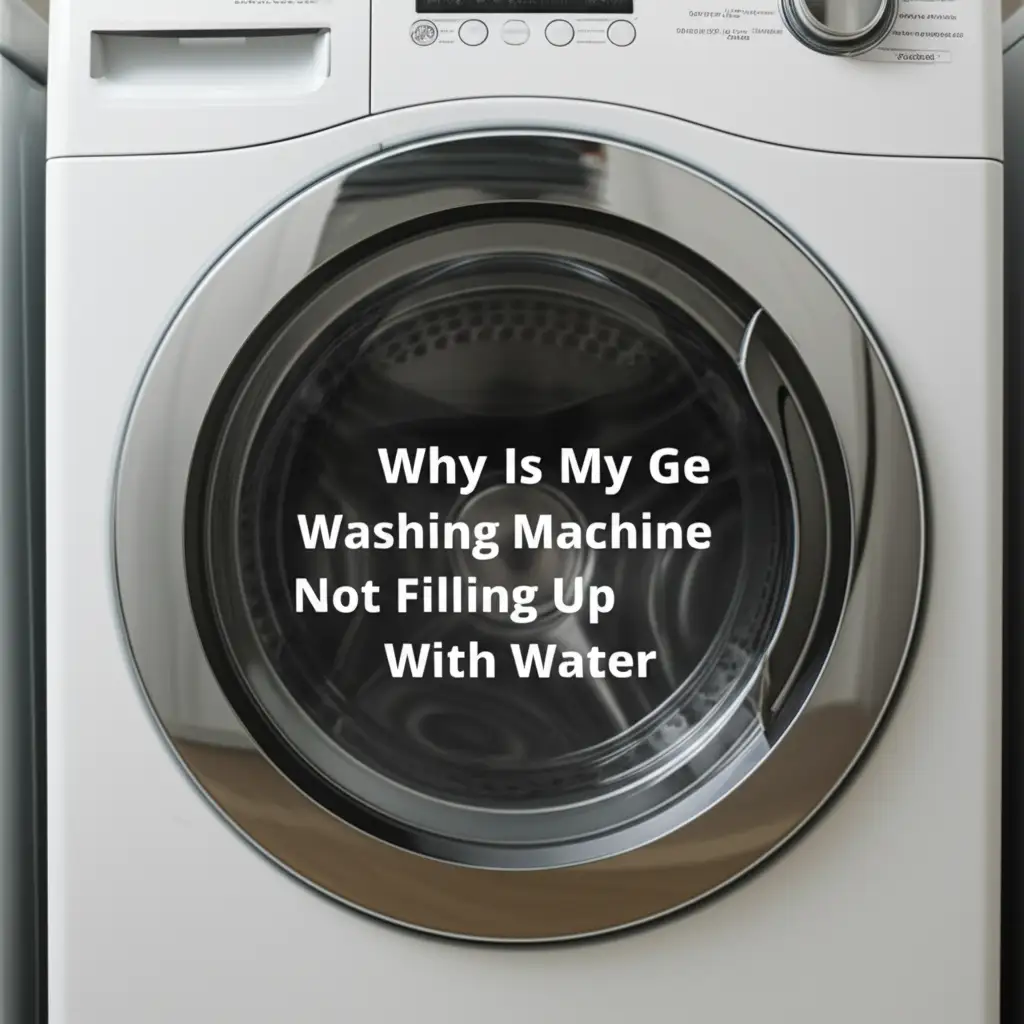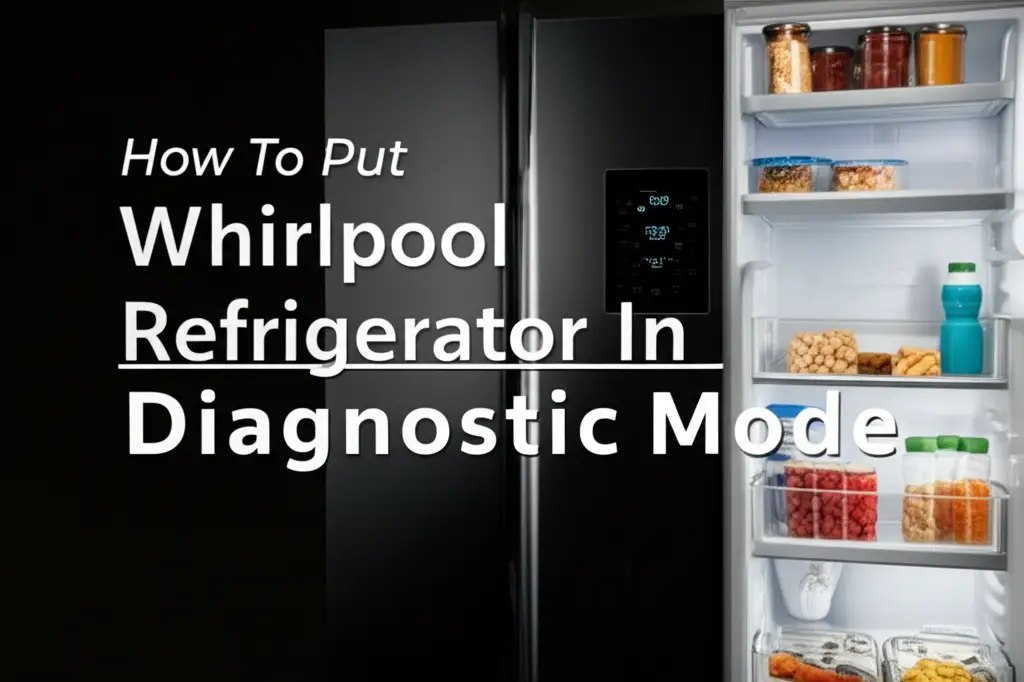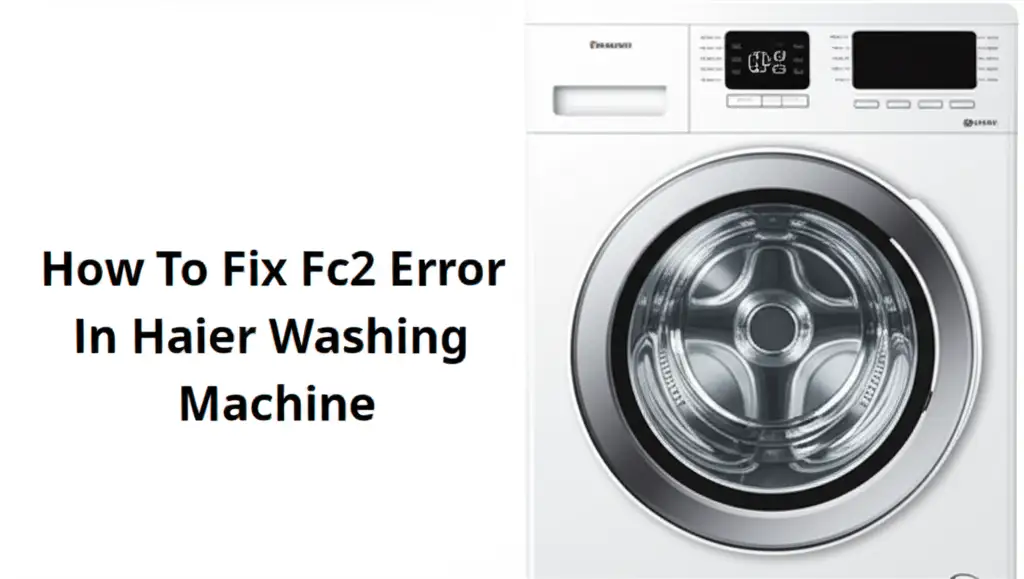· Katria Melrose · Appliance Repair · 19 min read
Why Is My Whirlpool Washing Machine Blinking All The Lights

Why Is My Whirlpool Washing Machine Blinking All The Lights?
Imagine this: You load your laundry, press start, and instead of a hum of activity, your Whirlpool washing machine starts blinking all its lights. This can be confusing and alarming. Many people face this exact issue with their trusted appliance. It feels like your washer is trying to tell you something important.
When your Whirlpool washing machine is blinking all the lights, it usually signals an underlying problem. This visual alert is a way for the machine’s internal diagnostic system to communicate an error. You are not alone in experiencing this. This guide will help you understand what those flashing lights mean. We will explore common causes, provide step-by-step troubleshooting, and offer practical solutions. My goal is to get your laundry routine back on track.
Takeaway
When your Whirlpool washing machine blinks all its lights, here are the key steps to take:
- Reset the Machine: Unplug it for a minute, then plug it back in. This often clears minor glitches.
- Check Power Supply: Ensure the outlet works and the circuit breaker is not tripped.
- Identify Error Codes: Look for specific blinking patterns. These patterns correspond to unique error codes.
- Inspect Water Supply/Drain: Verify water valves are open, hoses are clear, and the drain pump filter is clean.
- Examine Lid/Door Lock: A faulty lock sensor prevents cycles from starting.
- Consult Your Manual: Your washer’s manual has specific error code meanings and reset procedures.
When your Whirlpool washing machine is blinking all the lights, it indicates an internal error or fault. This often means the control board detected a problem with a component or a cycle issue. The machine stops operation to prevent damage, signaling the need for attention.
Understanding Whirlpool Washer Blinking Lights: The Basics
When your Whirlpool washer starts blinking all its lights, it is not a random event. This action is a deliberate signal from the machine’s control board. It tells you something is wrong, and the washer cannot complete its task safely or correctly. Think of it as a distress signal from your appliance. This diagnostic feature helps you pinpoint the issue.
I know how frustrating it is to see those lights flash. The control board continuously monitors various components and functions during a wash cycle. If it detects an anomaly, like a sensor reading outside normal parameters or a component not responding, it triggers an error state. This error state is then communicated through the blinking lights. Different models might have slightly different blinking patterns for various errors, but the general concept remains the same.
Before diving into complex diagnostics, always perform a simple power reset. This is the first step I recommend to anyone facing this issue. Unplug your washing machine from the wall outlet. Wait for about 60 seconds. Then, plug it back in firmly. This action allows the control board to clear any temporary glitches or electrical spikes that might have caused the issue. Often, minor software errors or transient power fluctuations can trigger a false alarm, and a reset clears it. If the lights stop blinking and the machine resumes normal operation, you have solved the problem easily. If the lights continue to blink, or the issue reappears, you need to dig deeper into specific causes.
Common Causes for All Lights Blinking on Your Whirlpool Washer
When your Whirlpool washer blinks all its lights, several underlying issues could be the cause. It is rarely a single, universal problem. Instead, it is the machine’s way of indicating a fault across its system. I have found these issues often fall into categories like power, water flow, or component malfunctions. Understanding these common culprits helps in effective troubleshooting.
One frequent cause involves simple power supply issues. An unstable power connection, a tripped circuit breaker, or even a faulty outlet can make your washer behave erratically. The machine detects an inconsistent power flow, which can confuse its sensitive electronics. It then enters an error state, signaling the problem with all lights blinking. I always check the power first, as it is the easiest fix.
Another common reason relates to water supply and drainage. If your washer cannot fill with water or drain properly, it will halt the cycle and signal an error. This includes issues like clogged hoses, a faulty water inlet valve, or a blocked drain pump filter. The machine relies on proper water levels and flow to operate. When these are not met, it flags the issue. You might find a foreign object in your drain pump filter. Cleaning this filter is often a simple but effective solution to many draining problems. Learn how to clean your washing machine filter here.
Component failures also trigger this blinking pattern. This could be a malfunctioning lid switch or door lock, a motor issue, or problems with the main control board itself. The lid switch ensures the machine does not operate with the lid open. If it fails, the washer thinks the lid is always open and will not start. Similarly, a faulty main control board can cause general communication errors, leading to all lights blinking. Each of these parts plays a crucial role in the washer’s operation. When any of them fail, the machine signals a system-wide error.
Troubleshooting Power and Electrical Issues
Power problems are a surprisingly common reason for a Whirlpool washing machine blinking all the lights. I learned this early on in my appliance troubleshooting. Before you even think about internal components, you must rule out issues with your home’s electrical supply. This step is critical for safety and efficiency. A simple power check can save you time and money.
First, check the wall outlet where your washing machine is plugged in. Ensure the plug is fully seated and there are no loose connections. Sometimes, a partially unplugged cord can cause intermittent power, leading to erratic behavior. I recommend plugging another small appliance, like a lamp or a hairdryer, into the same outlet. If the other appliance does not work, the problem lies with the outlet itself, not your washer. You might need an electrician to inspect the outlet.
Next, go to your home’s electrical panel and check the circuit breaker for the washing machine. Washing machines draw a significant amount of power, especially during the wash or spin cycles. An overload can trip the breaker. Look for a breaker switch that is in the “off” position or one that is halfway between “on” and “off” (tripped position). If it is tripped, flip it completely to the “off” position, then firmly back to the “on” position. If the breaker trips again immediately or frequently, you likely have an electrical overload or a short circuit within the washer. In this case, further investigation is needed, and a professional electrician might be required.
Sometimes, power fluctuations, like surges or brownouts, can confuse the washing machine’s control board. The control board is sensitive to consistent power. A sudden dip or spike can make it think something is wrong, causing it to freeze up and display the blinking lights. If you suspect power fluctuations, consider using a surge protector designed for large appliances. This can protect your washing machine from future electrical disturbances. Remember, always disconnect power to the appliance before performing any checks beyond the circuit breaker or plug. This ensures your safety.
Decoding Whirlpool Error Codes from Blinking Patterns
When your Whirlpool washing machine blinks all the lights, it is often trying to communicate a specific error code. The trick is to understand its language. Whirlpool washers use a sequence of blinks to indicate different problems. This system allows you to pinpoint the exact issue rather than guessing. I have found this method very helpful for diagnosing problems.
To decode the error, you usually need to observe the pattern of the blinking lights. For example, some models might blink a certain light a specific number of times, pause, then repeat. This number of blinks corresponds to a digit in an error code. For instance, if the “Wash” light blinks four times, pauses, and the “Rinse” light blinks two times, it might indicate an F4 E2 error. The exact method for reading these codes varies by model, so consulting your owner’s manual is essential.
Your owner’s manual is the best resource for interpreting these patterns. It contains a list of error codes specific to your model and what each code signifies. Many manuals also provide basic troubleshooting steps for each error. If you cannot find your physical manual, Whirlpool’s official website often has digital versions available for download. Just search for your model number. Knowing the error code is half the battle. It tells you which component is likely at fault.
Once you identify the error code, you can research the specific component associated with it. For example, an “F8 E1” error often points to a water supply issue, meaning the machine is not filling with water or taking too long. This directs your attention to the water inlet valve or water pressure. If your Whirlpool washing machine is not filling with water, you can find more help here. An “F5 E1” might indicate a lid lock problem. Having this specific information saves you from randomly checking every part of the washer. Always start your repair efforts with the exact problem the error code suggests. This makes your troubleshooting focused and effective.
Addressing Water Supply and Drainage Problems
Water-related issues are a very common reason why your Whirlpool washing machine might blink all its lights. The machine cannot function without proper water flow in and out. If the washer detects a problem with either filling or draining, it stops the cycle and signals an error. I have seen this issue many times, and the solutions are often straightforward.
First, check the water supply hoses leading to your washer. Ensure both the hot and cold water faucets are fully open. If they are closed or partially closed, the machine will struggle to fill. Also, inspect the hoses themselves for kinks, clogs, or damage. A kinked hose restricts water flow, mimicking a closed valve. I always make sure the hoses are straight and clear behind the machine. Sometimes, the small screens inside the hose connections at the washer can get clogged with sediment. Disconnect the hoses and clean these screens if they appear blocked.
Next, consider the drain system. If the washer cannot drain water effectively, it will eventually stop the cycle and show an error. Start by examining the drain hose. Make sure it is not kinked, crushed, or pushed too far down into the standpipe. The end of the drain hose should be at least 39 inches (1 meter) from the floor to prevent siphoning. A common culprit for draining issues is a clogged drain pump filter. This filter collects lint, coins, and small items that might bypass the drum. When it gets clogged, water cannot exit the machine efficiently.
You can usually access the drain pump filter through a small door at the bottom front of your washer. Place a shallow pan or towels underneath before opening it, as some water will likely come out. Carefully remove the filter and clean out any debris. This simple cleaning can resolve many drainage problems. If your Whirlpool washer is leaking from the bottom, it could be related to a clogged pump or drain line. For more detailed guidance on pump maintenance, especially for specific models, you might find specific instructions helpful. For instance, cleaning the pump on a Whirlpool AWO/D4505 washer has its own steps. After cleaning, reinsert the filter and close the door securely. Run a test cycle to see if the blinking lights have stopped.
Lid Switch, Door Lock, and Sensor Malfunctions
Many Whirlpool washing machines rely on safety mechanisms like lid switches and door locks. These components ensure the machine operates safely. If your washer is blinking all its lights, a problem with one of these sensors or locks is a very common cause. I have helped many people fix this issue. The machine will not start or continue a cycle if it believes the door or lid is open.
For top-loading Whirlpool washers, the lid switch is crucial. This small device detects whether the lid is closed properly. If the lid switch fails, the machine thinks the lid is always open, even when it is shut. This prevents the agitation or spin cycle from starting, and the washer will display an error, often indicated by blinking lights. You can usually locate the lid switch near the hinge area of the lid. Sometimes, it is simply misaligned, and you can adjust it. Other times, the switch itself is faulty and needs replacement. A quick test involves pressing down on the switch plunger (if visible) to see if you hear a click. If there is no click or the machine still blinks, the switch might be bad.
Front-loading Whirlpool washers use a door lock mechanism. This mechanism locks the door during operation to prevent water leaks and injuries. If the door lock assembly is faulty, the machine cannot sense that the door is securely closed and locked. This will prevent the cycle from starting or continuing, leading to blinking lights. Issues can range from a broken latch on the door itself to a defective electronic lock mechanism or its wiring. I often check for physical damage around the door or latch. Sometimes, you can hear a distinct click when the door locks. If you do not hear it, the lock might be the issue.
Beyond physical switches and locks, modern Whirlpool washers have various sensors. These include water level sensors, temperature sensors, and motor speed sensors. If any of these sensors malfunction, they send incorrect data to the control board. The control board then interprets this as an error, causing the universal blinking lights. For example, a faulty water level sensor might tell the machine it is not filling, even when it is. Troubleshooting these sensors often requires a multimeter and some technical knowledge. While some minor sensor issues might be resolvable with a power reset, consistent errors often point to a defective sensor needing replacement. Accessing and testing these components may require disassembling part of the washer.
Motor, Drive System, and Component Failures
When your Whirlpool washing machine is blinking all its lights, it can sometimes signal a more serious underlying issue within the motor or drive system. These components are the heart of your washer. They power the drum’s rotation for washing and spinning. If they encounter a problem, the control board immediately detects a critical fault. I know this can be daunting, as these repairs are often more complex.
The washing machine motor is responsible for spinning the drum. If the motor fails to start, struggles, or overheats, the control board will register an error. This is often indicated by the blinking lights. Common motor problems include worn-out carbon brushes (in some older models), a faulty stator or rotor, or a wiring issue. You might hear unusual noises, like grinding or buzzing, if the motor is failing. Sometimes, the motor simply does not engage at all. Checking motor resistance with a multimeter can help diagnose some motor issues, but this requires specific technical knowledge.
Beyond the motor, the drive system connects the motor to the drum. This includes parts like the drive belt, pulley, and transmission (in traditional top-loaders). If the drive belt is broken, slipped, or excessively worn, the motor will spin, but the drum will not move. The washer’s control system will detect this lack of drum movement and trigger an error. You might hear the motor running but no drum movement. For some direct-drive models, the motor directly connects to the wash basket. Here, a faulty drive coupling can be the culprit. These couplings can wear out over time.
Finally, the main control board itself can be the source of the problem. This board is the “brain” of your washing machine. It processes all sensor inputs, sends commands to components, and manages cycles. If the control board malfunctions, it might send out erroneous signals, misinterpret sensor readings, or fail to communicate with other components. This can result in all the lights blinking, even if other components are fine. Unfortunately, diagnosing a faulty control board can be tricky. It often involves ruling out all other possibilities first. Look for visible signs of damage on the board, like burn marks or swollen capacitors. Replacing a control board is usually a straightforward swap, but the part itself can be expensive. For complex motor or control board issues, you might consider professional help or consult resources on general appliance DIY if you feel confident. You can find more general DIY washing machine repair tips here.
When to Call a Professional for Whirlpool Washer Repair
I understand the desire to fix things yourself. Many simple issues with a Whirlpool washing machine blinking all the lights are DIY friendly. However, there are times when calling a professional appliance technician is the best and safest course of action. Knowing when to hand it over saves you time, prevents further damage, and ensures a proper repair.
You should consider professional help if you have completed all the basic troubleshooting steps. This includes resetting the machine, checking power, inspecting water lines, cleaning filters, and verifying the lid/door lock. If the lights still blink after these checks, the problem is likely more complex. It might involve internal components that are harder to access or diagnose without specialized tools. I always advise people not to venture into areas they are uncomfortable with.
Safety is another major factor. Working with electrical appliances carries inherent risks. If you are not comfortable handling electrical components, or if the issue involves wiring, motors, or the main control board, it is safer to call a professional. Appliance technicians have the training and experience to work with high voltage safely. They also carry the right diagnostic equipment to accurately pinpoint the fault. Trying to fix something beyond your skill level can lead to injury or further damage to your expensive appliance.
Finally, consider the cost versus the benefit. If the repair requires expensive parts like a new motor or control board, and you are unsure about the diagnosis or installation, a professional can provide an accurate estimate. Sometimes, the cost of repair might approach the cost of a new machine, especially for older models. A technician can advise you on whether the repair is economically sensible. They also often provide a warranty on their work, giving you peace of mind. For these more intricate problems, or if you simply feel overwhelmed, I encourage you to seek out a certified Whirlpool appliance repair technician. Their expertise ensures your washer gets fixed correctly and efficiently.
FAQ Section
Q1: What does it mean when all the lights blink on my Whirlpool washer? When all the lights blink, your Whirlpool washing machine is signaling an error. It indicates the control board has detected a problem preventing the machine from operating correctly. This can range from a simple power glitch to a more serious component failure. The blinking acts as a general alert that something needs attention.
Q2: How do I reset a Whirlpool washer that is blinking? To reset your Whirlpool washer, first unplug the machine from its power outlet. Wait for about 60 seconds to allow the control board to fully discharge and clear any temporary errors. Then, plug the washing machine back into the outlet. This simple power cycle often resolves minor electronic glitches causing the lights to blink.
Q3: Can a power surge cause my Whirlpool washer lights to blink? Yes, a power surge or inconsistent power supply can definitely cause your Whirlpool washer lights to blink. Modern washing machines have sensitive control boards. These boards can get confused or temporarily malfunction due to sudden voltage fluctuations. A power reset often clears this issue, but repeated occurrences might indicate problems with your home’s electrical system or the need for a surge protector.
Q4: How do I find the error code on my Whirlpool washing machine from blinking lights? To find the error code, you typically need to observe the specific pattern of the blinking lights. Whirlpool models use different lights (e.g., “Wash,” “Rinse”) and sequences to represent digits in an error code. Your owner’s manual is the best source for decoding these patterns specific to your model. It will explain which lights correspond to specific numbers, helping you identify the exact fault.
Q5: When should I call a technician for blinking lights? You should call a technician if you have performed basic troubleshooting steps (power reset, checking power, water supply, and drain) and the lights continue to blink. Also, if the issue involves complex components like the motor, main control board, or requires specialized tools, professional help is recommended. Safety is paramount when dealing with electrical appliances.
Q6: What are common Whirlpool error codes associated with blinking lights? Common Whirlpool error codes often involve issues like water supply (e.g., F8 E1 - long fill time), drainage (e.g., F9 E1 - long drain time), or lid/door lock problems (e.g., F5 E1). While all lights blinking indicate a general fault, observing the specific pattern or which lights blink sequentially can help you narrow down the exact error code as described in your appliance’s manual.
Conclusion
Seeing your Whirlpool washing machine blinking all the lights can be an unsettling experience, but it is often a sign of a problem that you can address. We have explored the primary reasons behind this alarming display, from simple power glitches and error codes to more involved water supply, drainage, and component failures. Understanding these common culprits empowers you to approach troubleshooting systematically.
Remember, a simple power reset is often the first and most effective step. Beyond that, carefully checking your power supply, inspecting water connections, and cleaning your drain pump filter can resolve many issues. If your washer is trying to communicate a specific error, your owner’s manual holds the key to deciphering those blinking patterns. My hope is that this guide has given you the confidence to diagnose and, in many cases, fix the problem yourself.
Should the issue persist after your diligent efforts, or if you find yourself dealing with complex internal components, do not hesitate to seek professional assistance. An expert can quickly and safely get your Whirlpool washing machine back to its optimal working condition. Your laundry routine should be smooth, not stressful. Take these steps, and you will likely see your washer running normally again soon.
- Whirlpool washing machine
- washing machine repair
- blinking lights
- appliance troubleshooting
- error codes
- washing machine problems
- DIY appliance repair
- Whirlpool washer lights





